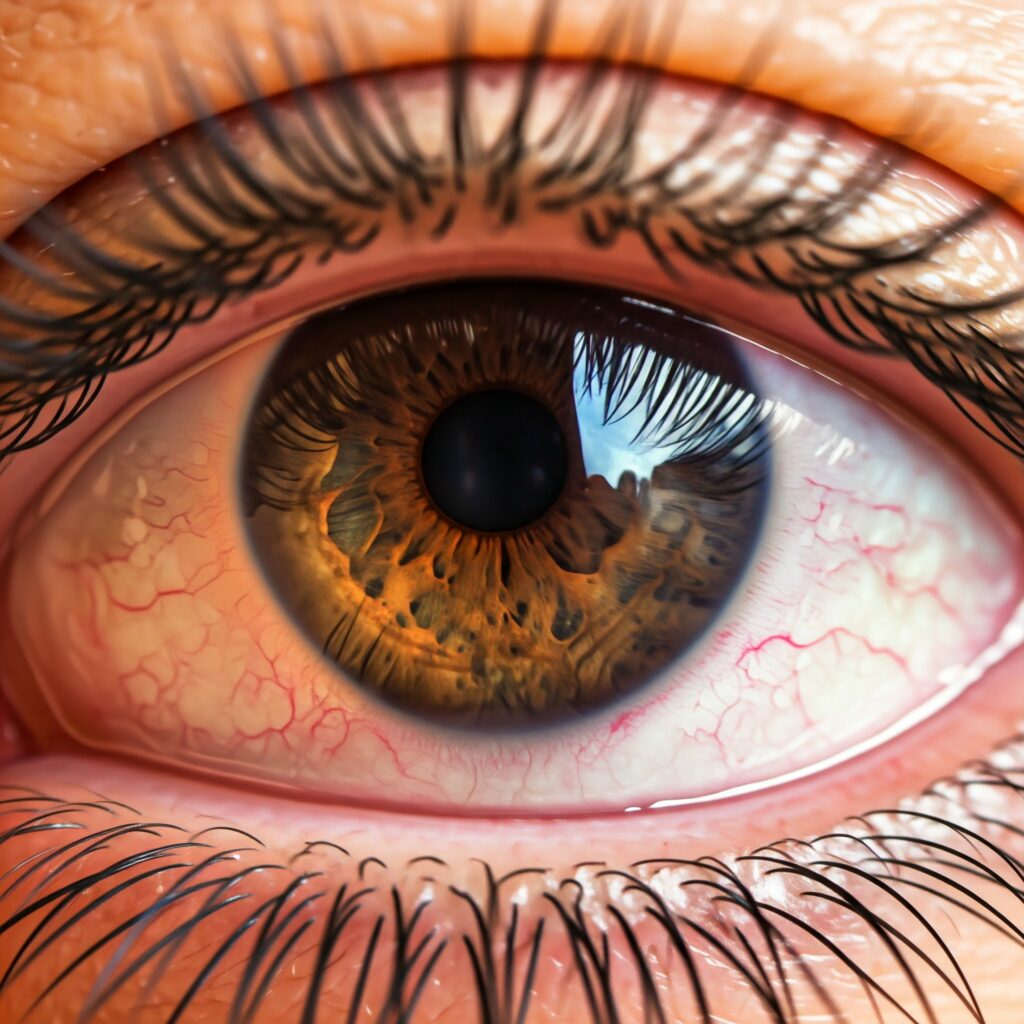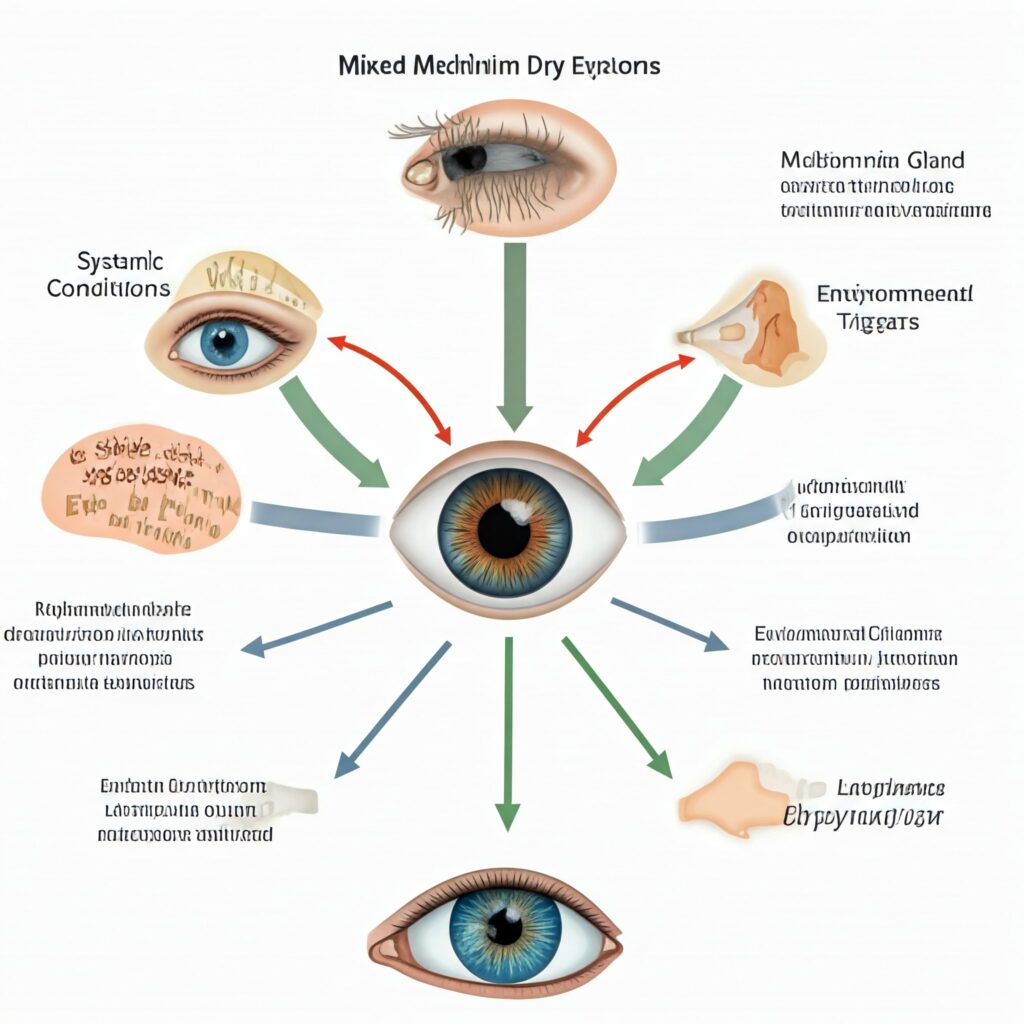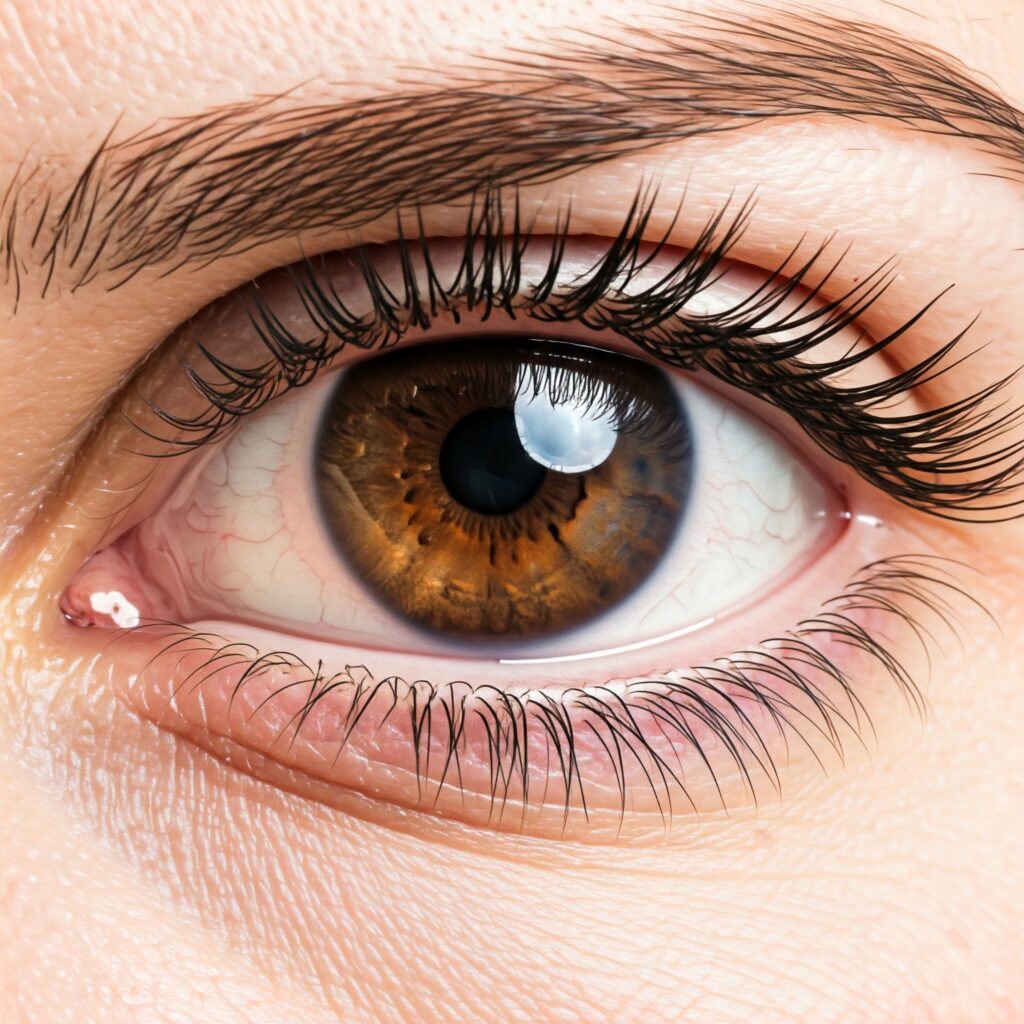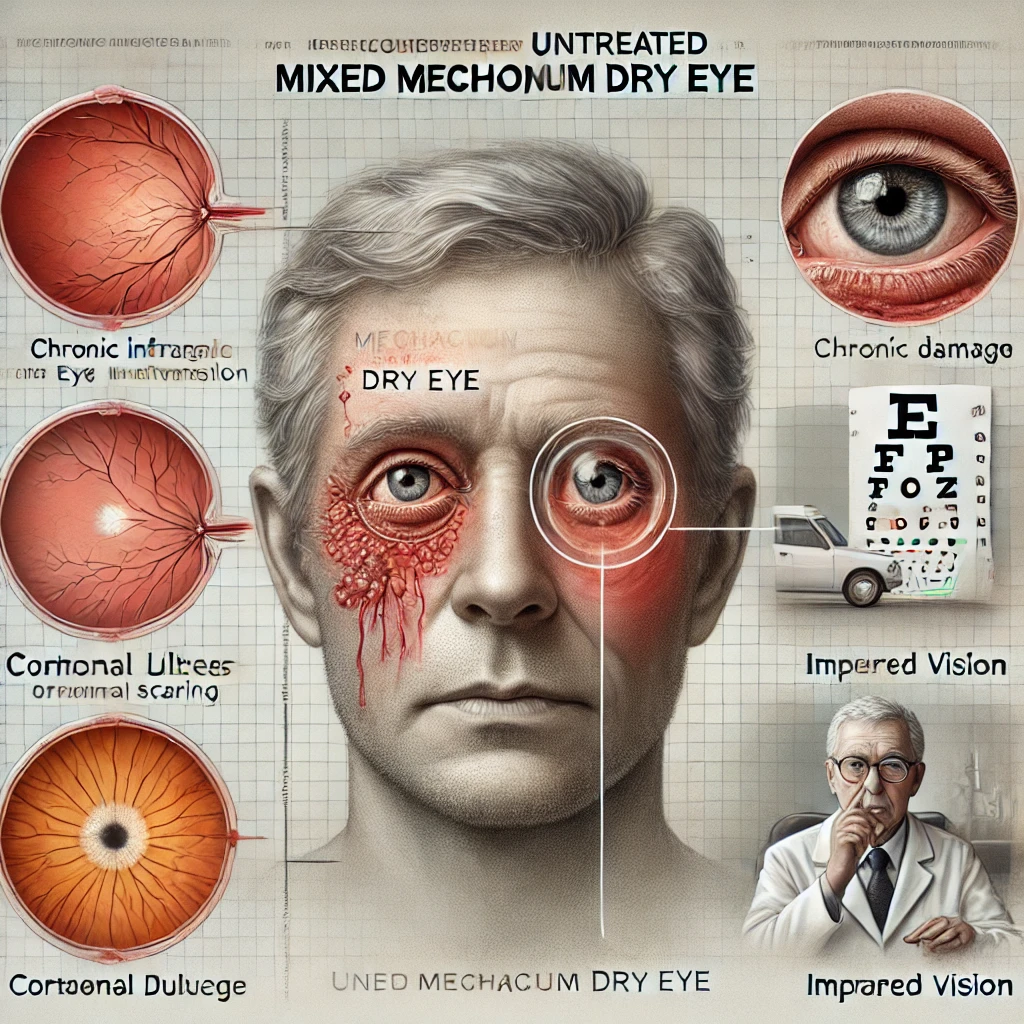Mixed Mechanism Dry Eye
Dry eye disease (DED) is a complex condition affecting millions of people worldwide. Among its various forms, Mixed Mechanism Dry Eye stands out due to its dual involvement of evaporative and aqueous-deficient components.
Mixed Mechanism Dry Eye is a subtype of dry eye disease characterized by the simultaneous presence of two main contributors:
- Evaporative Dry Eye – Caused by increased tear evaporation, often due to meibomian gland dysfunction (MGD) or environmental factors.
- Aqueous Deficient Dry Eye – Caused by reduced tear production, often linked to dysfunction of the lacrimal glands.
This combination complicates the condition, requiring a multifaceted approach for effective management.

Causes of Mixed Mechanism Dry Eye
Several factors can contribute to this type of dry eye, including:
- Meibomian Gland Dysfunction (MGD):
- Leads to insufficient lipid production, resulting in rapid tear evaporation.
- Lacrimal Gland Dysfunction:
- Conditions like Sjögren’s syndrome or aging reduce aqueous tear production.
- Environmental Triggers:
- Wind, air conditioning, or prolonged screen time exacerbate symptoms.
- Systemic Conditions:
- Diabetes, autoimmune disorders, or thyroid dysfunction can influence both tear production and quality.
- Medications:
- Antihistamines, antidepressants, and beta-blockers may decrease tear production.

Symptoms of Mixed Mechanism Dry Eye
Common symptoms include:
- Persistent eye dryness and discomfort.
- Redness and irritation.
- Sensitivity to light (photophobia).
- Blurred vision, especially after extended visual tasks.
A sensation of grittiness or foreign body in the eyes

Diagnosing Mixed Mechanism Dry Eye
Accurate diagnosis is essential for tailoring treatment. Eye care professionals use various diagnostic tools:
- Patient History:
- A detailed questionnaire about symptoms, lifestyle, and medical history.
- Ocular Surface Tests:
- Tear Break-Up Time (TBUT): Evaluates tear film stability.
- Schirmer’s Test: Measures tear production.
- Osmolarity Testing: Assesses tear film osmolarity.
- Imaging Techniques:
- Advanced imaging, such as meibography, examines the health of meibomian glands.
Treatment of Mixed Mechanism Dry Eye
Managing mixed mechanism dry eye requires addressing both the evaporative and aqueous-deficient components.
- Lifestyle Modifications
- Take regular breaks during screen use.
- Use humidifiers in dry environments.
- Wear wraparound glasses outdoors to reduce exposure to wind.
- Preservative-free artificial tears can replenish the tear film and provide temporary relief.
- Anti-inflammatory Therapies
- Medications like cyclosporine (Restasis) or lifitegrast (Xiidra) reduce inflammation and improve tear production.
- Meibomian Gland Treatment
- Lid hygiene: Regular cleaning of eyelid margins with gentle cleansers.
- Warm compresses: Stimulate oil secretion.
- Thermal pulsation devices: Such as LipiFlow, unclog meibomian glands.
- Tear Conservation
- Punctal plugs can block tear drainage, helping tears stay longer on the ocular surface.
- Nutritional Supplements
- Omega-3 fatty acids from fish oil or flaxseed may improve tear film quality.
- Advanced Treatments
- Autologous serum eye drops for severe cases.
- Scleral contact lenses to protect the ocular surface and improve hydration.
Complications of Untreated Mixed Mechanism Dry Eye
If left unmanaged, mixed mechanism dry eye can lead to:
- Chronic eye inflammation.
- Corneal damage, including ulcers.
Impaired vision, affecting daily activities and quality of life

Prevention Tips
While not all cases are preventable, these steps can minimize risk:
- Stay hydrated and maintain a balanced diet.
- Avoid prolonged exposure to screens without breaks.
- Protect eyes from harsh environmental conditions.
Use medications as directed to avoid systemic side effects on tear production
